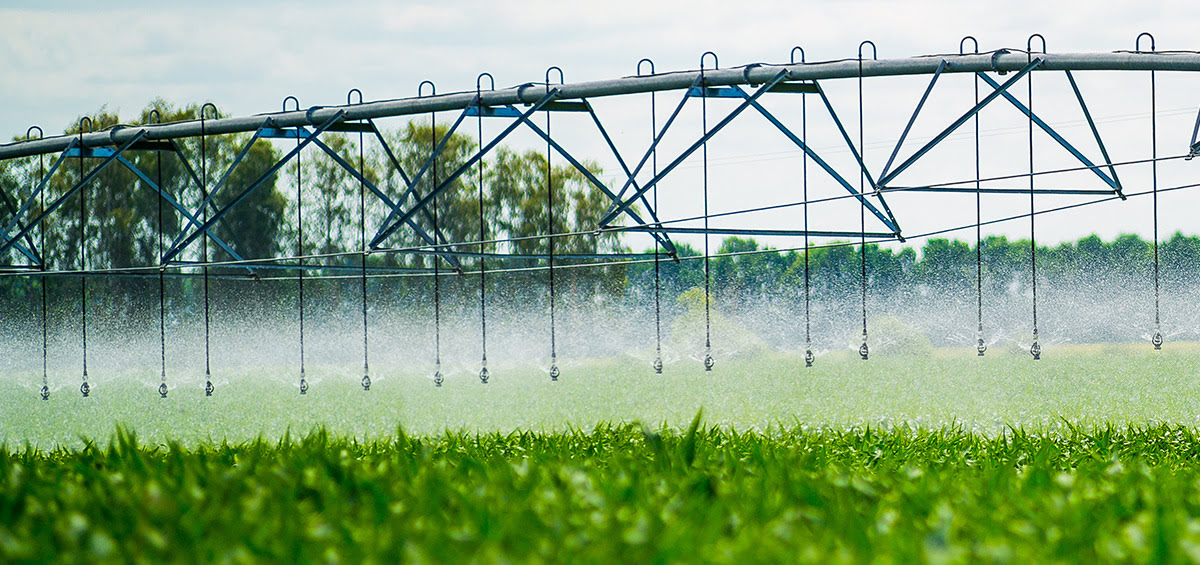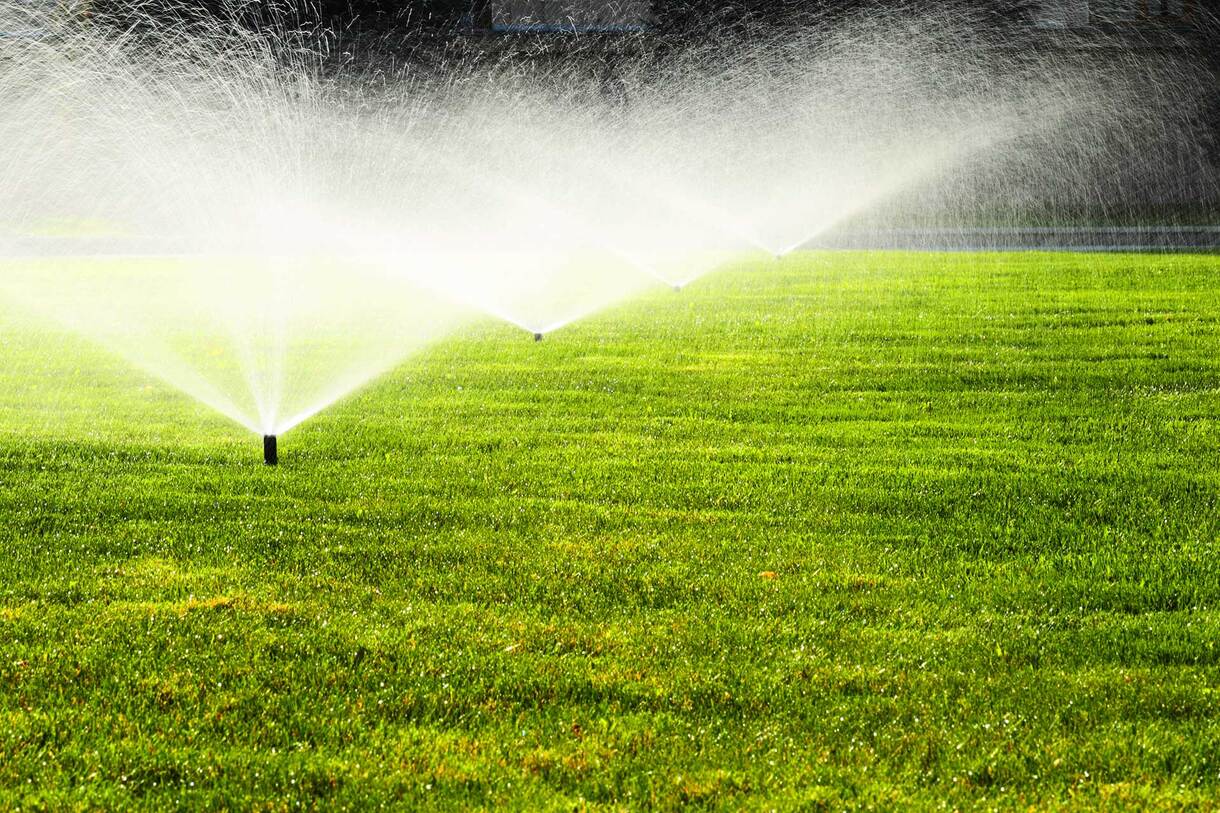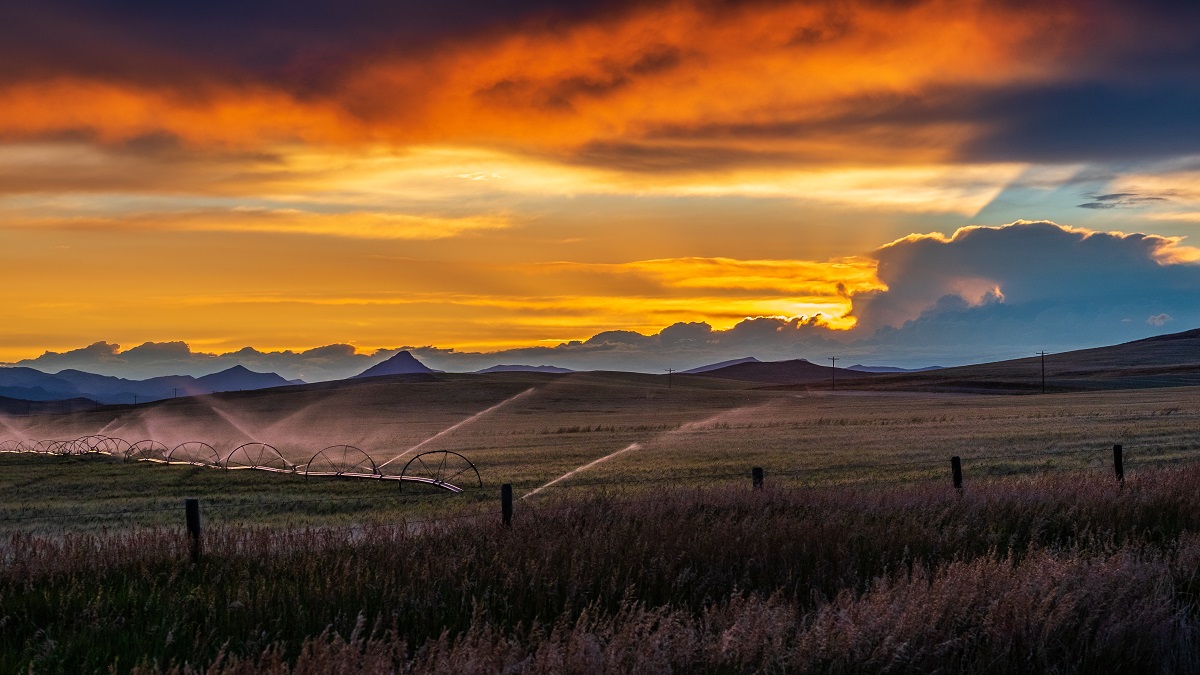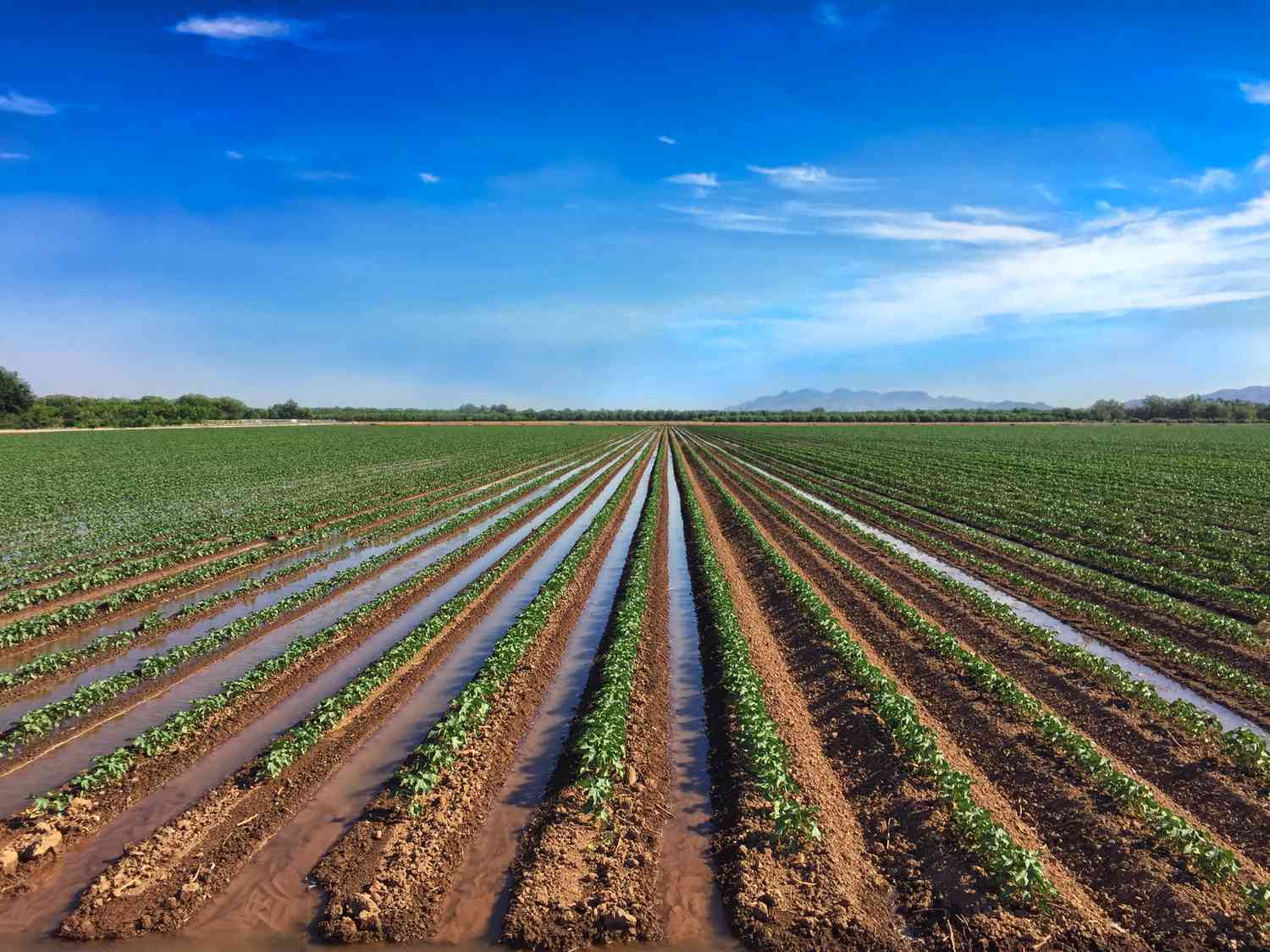Home>Gardening News and Trends>Latest News>What Is Irrigation Canal


Latest News
What Is Irrigation Canal
Modified: January 22, 2024
Looking for the Latest News on Irrigation Canal? Discover what an irrigation canal is, its importance, and how it impacts agriculture and water distribution. Stay informed with the latest updates!
(Many of the links in this article redirect to a specific reviewed product. Your purchase of these products through affiliate links helps to generate commission for Chicagolandgardening.com, at no extra cost. Learn more)
Table of Contents
Introduction
Welcome to the world of irrigation canals, the unsung heroes of agriculture and water management. These vital infrastructures play a crucial role in providing the water needed for agricultural activities, ensuring the growth and productivity of crops. But what exactly is an irrigation canal?
An irrigation canal is a man-made water channel designed to transport water from a water source, such as a river or reservoir, to agricultural fields for irrigation purposes. This carefully engineered system has been an integral part of agriculture for thousands of years, allowing farmers to bring water where it is needed most and effectively manage water resources. With the ever-increasing demand for food production and the challenges posed by climate change, irrigation canals have become even more critical in sustainable water management.
These canals serve as a lifeline for farmers, providing them with a consistent water supply for their crops. They play a crucial role in areas where rainfall is insufficient or unreliable, ensuring that agricultural activities can thrive even in arid or drought-prone regions. Through the controlled distribution of water, irrigation canals allow farmers to optimize the use of water resources and achieve higher crop yields.
Furthermore, irrigation canals offer numerous benefits beyond crop irrigation. They help in flood control by redirecting excess water away from populated areas and into designated reservoirs or drainage systems. Irrigation canals also support ecosystem preservation by maintaining water flow to wetlands, rivers, and wildlife habitats. Additionally, they facilitate navigation for transportation purposes, enabling boats and barges to navigate through waterways for trade and commerce.
Throughout history, civilizations have thrived or declined based on their ability to effectively manage water resources through irrigation canals. Ancient civilizations such as the Egyptians, Mesopotamians, and Indus Valley civilizations extensively used irrigation canals to transform arid landscapes into flourishing agricultural centers. Today, with advancements in technology and engineering, irrigation canals continue to play a crucial role in sustaining global food security and promoting economic development.
In the following sections, we will delve deeper into the definition, functions, types, components, and challenges of irrigation canals, highlighting their vital importance in modern agriculture and water management.
Definition of Irrigation Canal
An irrigation canal can be defined as a man-made water channel or conduit constructed with the primary purpose of transporting water from a water source, such as a river, lake, or reservoir, to agricultural fields for irrigation needs. It serves as an essential component of an irrigation system, enabling the controlled distribution and delivery of water to crops.
These canals are carefully engineered and designed to efficiently move water over long distances, often through a network of interconnected channels. They are constructed with a slight gradient or slope to ensure the smooth flow of water from the source to the fields, preventing the formation of stagnant pools. Additionally, they may incorporate various structures, such as weirs, gates, and culverts, to regulate the flow of water and distribute it evenly to different parts of the fields.
One distinguishing feature of irrigation canals is their flexibility and adaptability. They can be constructed in different sizes and shapes, ranging from small, narrow channels to large, wide canals that span several kilometers. The design and dimensions of an irrigation canal depend on factors such as the water requirements of the crops being cultivated, the topography of the land, and the availability of water sources.
It is important to note that irrigation canals can take various forms depending on the type of irrigation system used. For surface irrigation methods, such as flood or furrow irrigation, the canals are usually open channels that allow water to flow directly into the fields. On the other hand, for pressurized irrigation systems like sprinkler or drip irrigation, the canals may be pipes or underground conduits that transport water to the irrigation units.
Irrigation canals are not limited to agricultural areas but can also be found in urban landscapes. In urban settings, canals are employed for various purposes, such as drainage, flood control, and landscaping. They provide a means to efficiently manage and redirect excess water during heavy rainfall events, preventing flooding and waterlogging in urban areas.
In summary, an irrigation canal is a man-made water channel designed to transport water from a source to agricultural fields for irrigation purposes. They are crucial for the efficient distribution and delivery of water to crops, ensuring their survival and productivity.
Functions and Purpose of Irrigation Canals
Irrigation canals serve several important functions in agricultural and water management systems. These functions are aimed at efficiently delivering and distributing water to crops, maximizing water use efficiency, and ensuring the sustainability of agricultural practices. Let’s explore the key functions and purposes of irrigation canals:
- Water Supply: The primary function of irrigation canals is to provide a reliable and consistent water supply to agricultural fields. By tapping into nearby water sources such as rivers, reservoirs, or underground aquifers, canals ensure that crops have access to the water they need for growth and development.
- Water Distribution: Canals facilitate the controlled distribution of water to different parts of the fields. Through a network of interconnected channels, water can be directed to specific areas, ensuring that all crops receive an adequate amount of water for their requirements.
- Water Conservation: Properly designed irrigation canals help in conserving water by reducing losses due to evaporation, seepage, and leakage. By managing the flow of water and employing technologies such as lining the canals with impermeable materials, water losses can be minimized, maximizing the efficiency of water use.
- Soil Fertility Management: Irrigation canals play a vital role in ensuring proper soil fertility management. They allow for the controlled application of water, which helps in regulating soil moisture levels required for optimal crop growth. Additionally, canals can be used to transport and distribute fertilizers and other soil amendments, enhancing soil fertility and nutrient availability.
- Flood Control: In regions prone to heavy rainfall or monsoons, irrigation canals serve as a means of flood control. By diverting excess water from rivers or catchment areas into canals, they help prevent waterlogging in agricultural fields and nearby communities, reducing the risk of crop damage and flood-related disasters.
- Water Storage and Regulation: Canals are often connected to reservoirs or other storage facilities that help regulate the availability of water throughout the year. Water can be stored during periods of high rainfall or river flow and released as needed during dry seasons or droughts, ensuring a stable and consistent water supply for irrigation purposes.
- Improved Crop Yield and Quality: Through efficient water distribution and management, irrigation canals contribute to improved crop yields and quality. Crops receiving sufficient water at the right time are more likely to reach their full productivity potential, leading to higher yields, better quality produce, and increased profitability for farmers.
- Sustainable Agriculture: Irrigation canals support sustainable agricultural practices by enabling farmers to cultivate crops in areas with limited rainfall or water resources. They help mitigate the impacts of climate change and contribute to food security by ensuring the continuity of agricultural production, even in arid or semi-arid regions.
Overall, irrigation canals are essential components of agricultural systems, providing water supply, distribution, and storage capabilities that are crucial for crop growth and sustainable water management. They play a vital role in supporting efficient and responsible water use, contributing to increased productivity, improved food security, and environmental sustainability in agricultural practices.
Types of Irrigation Canals
Irrigation canals come in various types, each with its own specific characteristics and functions. The type of irrigation canal used depends on factors such as the topography of the land, the availability of water sources, and the desired method of water distribution. Let’s explore some of the common types of irrigation canals:
- Main Canals: Main canals are the primary channels that carry water from the water source, such as a river or reservoir, to the fields. These canals are typically wide and have a high flow capacity to meet the water demands of large agricultural areas. Main canals are often situated at the highest elevation in the irrigation system and are responsible for diverting water into the secondary and tertiary canals.
- Branch Canals: Branch canals, also known as distributary canals, are smaller channels that branch off from the main canals. They distribute water to specific areas within the agricultural fields. Branch canals are designed to have a lower flow capacity than the main canals, ensuring a controlled distribution of water to smaller subunits of the agricultural landscape.
- Lateral Canals: Lateral canals, also referred to as sub-main canals or field channels, are smaller canals that further divide the branch canals into individual plots or fields. These canals deliver water directly to the crop rows or furrows. Lateral canals are usually narrower and shallower than the main and branch canals but are designed to maintain a consistent flow of water to ensure uniform irrigation.
- Field Ditches: Field ditches are the smallest and most localized type of irrigation canals. They are shallow channels dug within individual fields to distribute water evenly to the crop rows or beds. Field ditches are commonly used in systems such as furrow irrigation, where water is distributed along trenches parallel to the crop rows.
- Underground Pipes: In modern irrigation systems, underground pipes or conduits are often used as an alternative to open canals. These pipes transport water from the main or branch canals to the fields and are typically made of materials such as PVC or HDPE. Underground pipes provide the advantages of minimizing water loss due to evaporation or seepage and reducing the risk of contamination.
- Collector Drains: Collector drains, also known as drainage canals or interceptor drains, are canals designed to collect excess water from the fields and carry it away to prevent waterlogging and drainage problems. These canals play a crucial role in the overall water management system, ensuring that the soil remains adequately drained and preventing salt buildup due to excessive irrigation.
- Secondary and Tertiary Canals: Secondary and tertiary canals are intermediate channels that help distribute water from the main canals to the field level. They further divide and subdivide the flow of water, providing more precise control over water distribution. These canals ensure that water is delivered to the fields at the proper flow rate and volume, optimizing irrigation efficiency.
The type of irrigation canal used can vary based on the specific requirements of the agricultural landscape, the irrigation method employed, and the desired level of precision in water distribution. Efficiently designed and maintained canals are essential to ensure optimal water supply, delivery, and management, leading to improved agricultural productivity.
Components of an Irrigation Canal
An irrigation canal consists of several crucial components that work collaboratively to ensure the effective distribution and management of water. These components are designed to regulate water flow, prevent erosion, and facilitate the controlled delivery of water to the agricultural fields. Let’s take a closer look at the key components of an irrigation canal:
- Headworks: The headworks are the starting or diversion point of the canal. They include structures such as weirs, gates, or intake structures that control the flow of water into the canal system. The headworks ensure that the water is adequately diverted from the water source into the irrigation canal.
- Regulators: Regulators are structures located at strategic points along the canal’s length. These structures help control and regulate the flow of water, ensuring a constant and even distribution throughout the canal network. Regulators can be gates, valves, or other devices that allow for the adjustment of water flow rates as needed.
- Cross-Drainage Structures: Cross-drainage structures, such as culverts or bridges, are built across natural or man-made barriers such as rivers, streams, or roads. These structures facilitate the uninterrupted flow of water in the irrigation canal, allowing it to cross over or under obstacles that intersect its path.
- Outlets: Outlets are structures that deliver water from the canal to the agricultural fields. They can be designed as gates, weirs, or other mechanisms that control the flow and release of water. The outlets distribute water evenly and accurately to specific locations within the fields, ensuring optimal irrigation.
- Overflow Spillways: Overflow spillways are structures incorporated into the canal system to prevent excessive water levels and potential damage from flooding. These spillways allow excess water to safely overflow and divert away from the canal, preventing overtopping and erosion along the canal banks.
- Lining: Canal lining refers to the use of impermeable materials to cover the bed and walls of the canal. Lining helps minimize seepage and reduce water losses, ensuring efficient water delivery to the fields. Common lining materials include concrete, asphalt, clay, or synthetic liners.
- Seepage Control: Seepage control measures are implemented to minimize the loss of water through seepage into the surrounding soil. Techniques such as grouting, consolidation, or adding impermeable layers are employed to reduce seepage, increasing the efficiency of water delivery to the crops.
- Vegetation and Erosion Control: To prevent erosion and maintain the stability of the canal banks, vegetation and erosion control measures are essential. Planting grass or other vegetation along the canal banks helps stabilize the soil, reducing the risk of erosion caused by water flow.
Each of these components plays a critical role in the overall functionality and efficiency of the irrigation canal system. Proper design, construction, and maintenance of these components ensure the reliable and efficient distribution of water, supporting sustainable agricultural practices.
Importance of Irrigation Canals
Irrigation canals hold immense importance in agricultural and water management systems, providing numerous benefits that contribute to sustainable agriculture and economic development. Let’s explore the key reasons why irrigation canals are crucial:
- Enhanced Crop Productivity: By providing a reliable and controlled water supply to agricultural fields, irrigation canals ensure that crops receive adequate moisture for optimal growth. This consistent water availability contributes to higher crop productivity, increased yields, and improved quality of agricultural produce.
- Water Resource Management: Irrigation canals play a vital role in managing water resources effectively. By diverting water from rivers, reservoirs, or other sources, canals enable farmers to use water efficiently and distribute it where it is most needed. This helps in optimizing water usage, minimizing wastage, and promoting sustainable water management practices.
- Drought Mitigation: In regions prone to droughts or arid conditions, irrigation canals provide a lifeline for agriculture. They help mitigate the impact of drought by providing a consistent water supply, enabling farmers to continue cultivating crops during periods of water scarcity. This contributes to food security and economic stability in drought-affected regions.
- Increased Agricultural Land Availability: Irrigation canals allow agricultural activities to take place in areas where natural water sources might be scarce or unreliable. By providing a controlled water supply, canals expand the availability of arable land, enabling cultivation in regions that would otherwise be unsuitable for agriculture due to limited rainfall or water availability.
- Improved Food Security: Irrigation canals play a crucial role in ensuring food security by increasing agricultural production. By providing a consistent water supply and supporting higher crop yields, canals contribute to a stable and reliable food supply, reducing dependency on fluctuating rainfall patterns and improving the overall availability of nutritious food.
- Rural Development and Poverty Alleviation: The presence of irrigation canals promotes economic development in rural areas. It enables farmers to diversify their crops, increase agricultural income, and engage in more profitable agricultural practices. This, in turn, leads to improved living standards, reduced poverty levels, and enhanced socio-economic conditions in rural communities.
- Flood Control and Water Management: Irrigation canals serve as a means of flood control and effective water management. By diverting excess water from rivers or catchment areas, canals help prevent flooding in agricultural fields and nearby communities. They also contribute to sustainable water use by managing water flows and regulating the availability of water resources throughout the year.
- Environmental Benefits: Well-designed irrigation canals contribute to environmental preservation and conservation efforts. They promote efficient water use, reducing the pressure on natural water sources. Canals also support the preservation of ecosystems by maintaining water flow to wetlands, rivers, and wildlife habitats, enhancing biodiversity and ecological balance.
The importance of irrigation canals cannot be overstated. They are fundamental to sustainable agriculture, water resource management, and economic development. By providing a consistent water supply, canals enhance crop productivity, promote food security, and support rural communities, while also ensuring efficient water use and environmental sustainability.
Challenges and Issues in Irrigation Canal Management
While irrigation canals are crucial for agricultural development and sustainable water management, they also face various challenges and issues in their management and operation. These challenges can hinder the effective functioning of the canal system and impact agricultural productivity. Let’s explore some of the key challenges and issues in irrigation canal management:
- Water Availability and Allocation: The availability and allocation of water resources pose significant challenges in irrigation canal management. Increasing competition for water from various sectors, such as agriculture, industry, and domestic use, can lead to conflicts over water allocation. Inadequate water sources and inefficient water use can limit the effectiveness of irrigation canals and affect crop production.
- Water Losses and Efficiency: Water losses due to seepage, leakage, and evaporation are common challenges in irrigation canal systems. These losses reduce the efficiency of water delivery and utilization, affecting crop yields and water resource sustainability. Addressing water losses through proper lining, maintenance, and modernization of canals is crucial for optimizing water efficiency.
- Operation and Maintenance: Proper operation and maintenance of irrigation canals are essential for their efficient functioning. Inadequate maintenance can lead to issues such as siltation, vegetation growth, and structural deterioration, affecting water flow and distribution. Lack of sufficient funding, technical expertise, and coordination can pose challenges in maintaining and repairing canal infrastructure.
- Water Quality and Contamination: The quality of water in canals is critical for sustainable agriculture. Contamination from pollutants, excessive salts, or pathogens can impact crop health and reduce crop productivity. Ensuring proper water treatment, regular monitoring, and good agricultural practices are necessary to prevent water contamination in irrigation canals.
- Equitable Water Distribution: Achieving equitable water distribution among farmers is a challenge in many irrigation canal systems. Unequal access to water resources can lead to social and economic disparities among farmers. Effective water governance mechanisms, such as water rights allocations and fair distribution methods, are needed to ensure equitable access to water resources.
- Climate Change and Uncertain Weather Patterns: Climate change and uncertain weather patterns pose significant challenges to irrigation canal management. Erratic rainfall, droughts, and extreme weather events can impact water availability and affect the planning and operation of the canal system. Adaptation strategies, such as improved water storage, water-saving technologies, and climate-resilient practices, are necessary to mitigate the impacts of climate change.
- Inadequate Institutional Capacity: Limited institutional capacity and weak governance structures can hinder effective irrigation canal management. Insufficient technical expertise, coordination among stakeholders, and low community participation can impede decision-making, maintenance, and operation of canal systems. Strengthening institutional capacity and promoting stakeholder engagement are crucial for efficient canal management.
- Land Tenure and Encroachment: Land tenure issues and encroachment on canal corridors can disrupt the functioning of irrigation canals. Unauthorized constructions, improper land-use practices, and land tenure conflicts can obstruct water flow and cause damage to the canal infrastructure. Effective land-use planning, land tenure regularization, and monitoring are necessary to mitigate these challenges.
Addressing these challenges in irrigation canal management requires a multi-faceted approach that includes effective governance, improved infrastructure, proper planning, and capacity building. By addressing these issues, irrigation canal systems can overcome obstacles and continue to play a vital role in sustainable agricultural development and water resource management.
Conclusion
Irrigation canals are the backbone of agricultural development and water management. These man-made water channels play a critical role in providing a reliable and controlled water supply to farms, ensuring optimal crop growth and increased agricultural productivity. They enable efficient water distribution, mitigate the impacts of drought, and contribute to food security and economic stability. Moreover, canals help in flood control, water conservation, and management of water resources.
Despite their importance, irrigation canal management faces various challenges and issues. Water availability, allocation, and quality pose significant challenges, requiring sustainable water management practices. Water losses, operation, and maintenance are also areas that need attention to maximize the efficiency of canal systems. Additionally, equitable water distribution, climate change adaptation, and strong institutional capacity are crucial for effective canal management.
Addressing these challenges requires collaborative efforts between policymakers, water management authorities, farmers, and local communities. Enhancing resilient infrastructure, implementing modern technologies, and promoting sustainable irrigation practices are integral to overcoming these challenges. Prioritizing proper water resource allocation, equitable distribution, and effective maintenance will ensure the long-term sustainability of irrigation canal systems.
In conclusion, irrigation canals are vital components of agricultural systems worldwide. They enable farmers to cultivate crops where water resources are limited, enhance food security, and contribute to economic development. By addressing the challenges faced in irrigation canal management, we can optimize water use, improve agricultural productivity, and promote sustainable water management practices, ensuring a bright and prosperous future for agriculture and water resource management.










